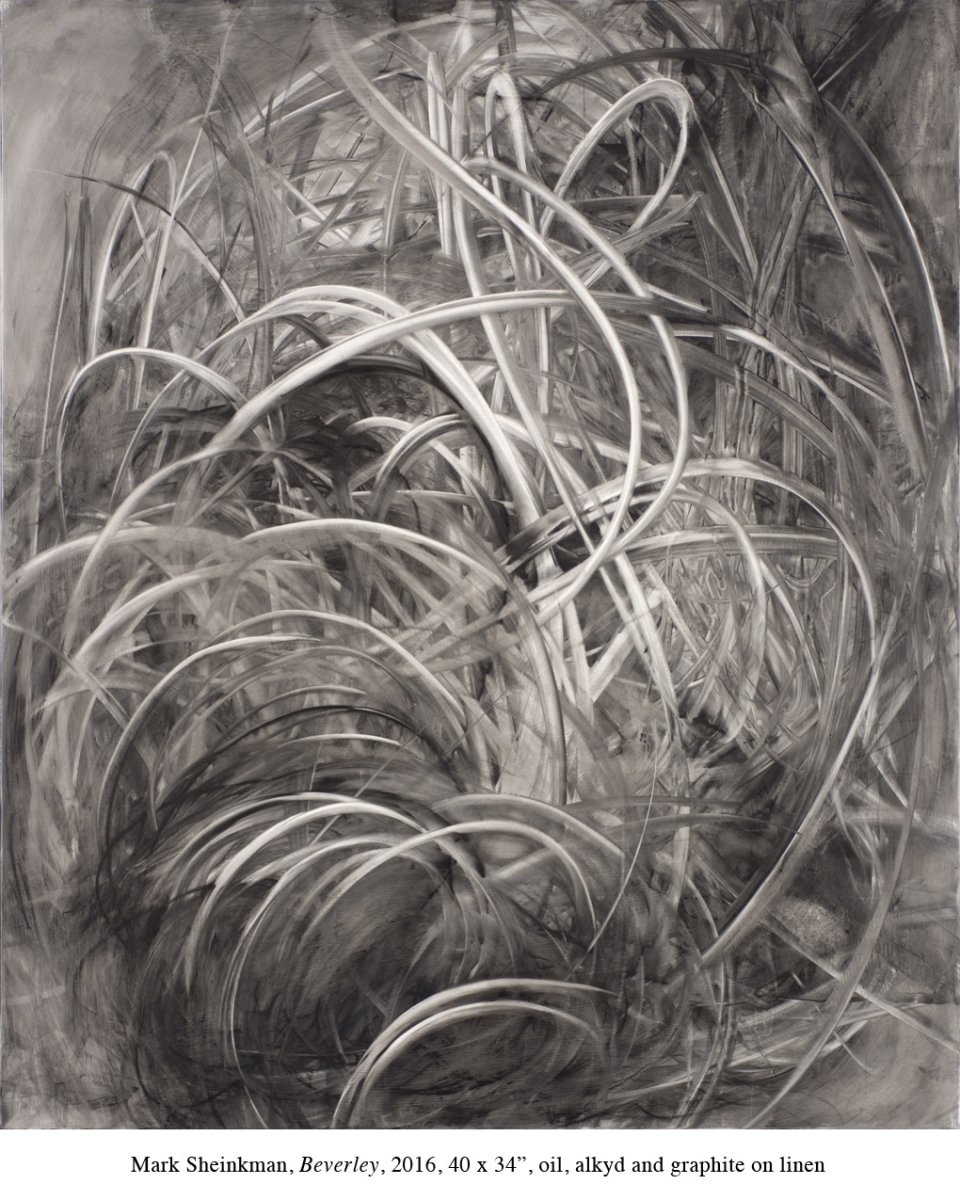
Mark Sheinkman sets up his canvas with an oil and alkyd ground and polishes and reprimes it again, until it looks like Carrera marble, so that it can take the thin black oil paint. He wipes off and lays in. Many of the pieces deal with tropes of painting and design. Squiggles and spots, diamonds on what appears to be a spinning disk. Cross-hatching becoming unmoored and floats away, Some are pure muscle memory. Lines just moving and corresponding. Like the way Coltrane drops off the theme and into the solo on "Ascension," responding to a shifting background of changing modality with a thin free line twisting in the void.
The way Sheinkman treats the edge speaks to the material that he thinks he sees. It's an issue. Where are we? What is this? The edge of what? He both doesn't respond; the mark running off the canvas as if a scanner frame has separated this 'section' from a giant energy field, but partially does respond, as if the 'stuff' is knotting and writhing in response to being observed. These loopy line paintings become quantum abstraction, operating at a level that defies the logic of stable, representational space.
Abstraction without allegory -- that isn't meant to arise out of natural forms, that stands outside of the literal and political world that objects, bodies, and buildings represent -- becomes wordless poetry. As if Dada's experiments in text as sound had become marks as pure image.
On one level we are hardwired to see the figural. Our hunter-gatherer mind reads light and shade and objects whether we like it or not and filters out meaningless sounds. Pareiodolia (or patternicity) is our innate tendency to see images within extemporaneous stimuli. Abstract artists play with this tendency; Sheinkman's lines cast shadow and emanate light despite the actual form defeating this read. It's more of a trace, moving through deep space and negative space.
The message of John Coltrane's "Ascension" is clear: a brown-skinned American needs like-minded individuals with the ability and desire to maintain a superstructure so that the artist has enough support to make a gesture of pure freedom. I think Mark Sheinkman's show of paintings up in Chelsea, right now, is an example of how artists need the New York art world to give them enough of a safe place to jump off from.
